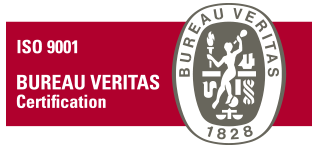4 Metal 3D Printing Tips for Better Parts

Your designs when 3D printing in metal should be slightly different to other kinds of 3D printing designs. Although the material is printed in a similar way, the wash and sintering process of our Additive Manufacturing Services requires different design guidelines.
We’ve compiled 4 tips from talking with the engineers and designers who design and print on our Markforged Metal printer every day. There are some easy wins in the design stage to ensure your parts succeed first time.
Here’s the entire process:
- Identify Critical Dimensions
- Maximise Bed Contact
- Reduce Supports
- Consider Batch Processing

- Identify Critical Dimensions
Our 3D printers are more precise in the planes parallel to the build plate because the print head can better approximate the cross-section of a feature when drawing it out on the plane of the print bed than when building it up step-by-step in the layer-based printing process.
Identify your part’s critical dimensions and try to orient them flat or parallel to the print bed. Anisotropy is not a big concern in metal 3D printing because the metal powders fuse across layer lines during the sintering process, so orienting your parts for strength is not as important, unlike plastic and composite 3D printing.


- Maximise Bed Contact
Maximising the contact your part has with the bed improves part success for multiple reasons, including print time, sintering performance, and supports necessary. Printing with the largest face of your part flat on the bed generally reduces the amount of support you need, cutting material usage and print time. Also, top-heavy parts are more likely to topple during sintering, so putting the larger features at the base of your print will also improve sintering performance.

- Reduce Supports
Fewer supports reduce printing and processing time on the printer. While supports are necessary to prevent overhang collapse during printing and sintering, reducing supports by adding features as simple as chamfers and fillets on edges can decrease the supports needed, overall cutting down on print time and material consumption.
The supports are printed metal, just like the part, and enable uniform shrinkage between the part and supports for a successful finished product. A ceramic release interface allows the supports and raft to separate from the part with a set of pliers or a mallet. While metal supports are easy to remove with hand tools, we must ensure they are accessible and can be removed before we kick off your print. If not, we might consider modifying some overhangs to improve support removal.


- Consider Batch Processing
The more parts we can pack into a sintering run or a wash, the lower the cost per part. If you are producing parts in volume, it is essential to consider how parts will be processed in batches. There is a sweet spot, but generally, a few parts are better than just one, so save up a few parts, and it will work out better on a cost-per-part basis.

Get the design right—first time
Our additive manufacturing customers and Markforged have done the hard yards. They know what works and what doesn’t.
Learning from their experiences, you can benefit from hindsight when designing your next 3D printed part.
Want to deep dive into the metal design guide? Download for free here.


